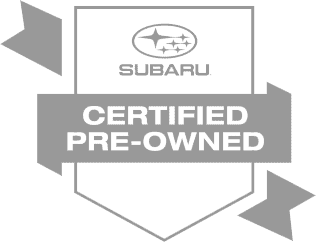

When it comes to maintaining your Subaru, one crucial aspect often gets overlooked: tire pressure. Did you know that under-inflated tires can lead to reduced fuel efficiency, compromised safety, and even premature tire wear? To keep your Subaru running smoothly whether you're driving a rugged Outback, a versatile Forester, or an adventurous Crosstrek checking your tire pressure should be at the top of your maintenance list. Ideally, you should check your Subaru's tire pressure at least once a month, before long trips, and during extreme weather changes.
This simple step not only enhances your vehicle's performance but also ensures your safety on the road. Neglecting tire pressure can result in handling issues and increased wear on your Subaru tires. For expert advice and assistance, visit Cascade Subaru today or contact us to keep your tires in top shape. Your Subaru deserves the best!
How Often Should You Check Your Subaru’s Tire Pressure?
Tire pressure changes over time. Temperature shifts, long drives, elevation changes, and daily use all have an effect. That’s why regular checks are needed.
Here’s when you should check your tire pressure:
-
Once a Month: This keeps your Subaru running at its best. Visit the Cascade Subaru Tire Center if you need help.
-
Before Long Trips: A long drive can cause pressure changes. It’s smart to check before you go.
-
When Temperatures Drop or Rise: Cold air makes tire pressure go down. Heat makes it rise. Check when the seasons change.
-
If Your Car Feels Off: If your car pulls to one side or rides rough, low tire pressure might be the cause.
By making tire checks a habit, you can avoid trouble and keep your Subaru in top shape.
How to Check Your Subaru Tire Pressure Accurately
Checking tire pressure is easy and only takes a few minutes. A tire gauge is the best tool for the job.
Follow these steps:
-
Use a Reliable Gauge: Digital or manual gauges both work well. Keep one in your car.
-
Check When Tires Are Cold: Pressure readings are more accurate when tires are cool. Mornings are the best time.
-
Find the Right Pressure: The sticker inside the driver’s door tells you the correct pressure for your Outback.
-
Remove the Cap & Press the Gauge: Push the gauge onto the valve stem. Wait for the reading to appear.
-
Adjust as Needed: If pressure is too low, add air. If too high, let some air out.
Proper tire checks ensure a safe and smooth ride. Keeping your tires for Subaru at the right pressure helps them last longer.
Why is Your Tire Pressure Important?
Keeping the right tire pressure is key to safe and smooth driving. When your Subaru tires are properly inflated, they help with handling, fuel use, and tire life. Driving with low or high pressure can cause problems.
Here’s why proper tire pressure matters:
-
Safety: Good tire pressure keeps your Forester or any Subaru stable on the road. Low pressure can make it harder to steer or stop.
-
Fuel Efficiency: Under-inflated tires create more drag, making the engine work harder and burn more gas.
-
Tire Life: If pressure is too low or too high, tires wear out faster and unevenly. This means replacing them sooner.
-
Comfort: The right pressure makes for a smoother ride. It helps absorb bumps and keeps your Subaru steady.
Checking your tires often helps prevent these issues. It’s a simple task that saves money and keeps you safe.
What Tire Pressure Should Your Subaru Have?Every Subaru model has a recommended tire pressure. This number is set to keep your ride safe and efficient.
To find the correct Subaru tire pressure:
-
Check the Owner’s Manual: Your Subaru’s manual has the exact number for your model.
-
Look Inside the Door Frame: A label near the driver’s seat often lists the correct tire pressure.
-
Avoid Relying on the Tire Sidewall: The number on the tire is the maximum pressure, not the recommended amount.
For example, the Subaru Forester may need a different pressure than an Outback. Always follow the manufacturer’s advice to get the best results.
Common Tire Pressure Issues and How to Spot Them
Tire pressure problems can happen without warning. Knowing what to watch for can save you from bigger issues.
Signs of Subaru tire pressure problems:
-
Low Pressure: The tire looks flatter than usual. You may feel sluggish steering or reduced fuel efficiency.
-
High Pressure: Tires seem too firm. The ride feels rough, and stopping may take longer.
-
Uneven Wear: If one side of the tire wears out faster, pressure may be uneven.
-
Tire Pressure Warning Light: If this light turns on, check your tires right away.
If you notice any of these issues in your Crosstrek or other Subaru, check your pressure. Keeping your tires at the right level improves safety and performance.
Seasonal Tire Pressure Tips for Subaru Drivers in Wenatchee
Weather changes affect tire pressure. Cold air makes it drop, while warm air makes it rise. Checking pressure often helps tires last longer.
Winter Tire Pressure Tips
-
Cold air lowers pressure, so check it more often.
-
Keep the pressure at the level in your owner’s manual.
-
Low pressure makes tires wear out faster.
Summer Tire Pressure Tips
-
Hot air expands tires, so check for over-inflation.
-
High pressure makes the ride rougher and can affect grip.
-
Always check before long trips.
Spring & Fall Tire Pressure Tips
-
Pressure changes as temperatures rise and fall.
-
Check at least once a month.
-
Keep a gauge in your car for quick checks.
Taking care of your tires keeps you safe in every season. A few minutes of care can prevent bigger problems down the road.
Common Tire Pressure Myths and Facts
There’s a lot of bad advice about tire pressure. Let’s set the record straight.
Myth: Tires should always be at max PSI.
Fact: The correct pressure is in your manual, not on the tire. The number on the tire is the maximum it can handle, not the recommended level.
Myth: You only need to check pressure when the warning light comes on.
Fact: By the time the light turns on, your tires may already be too low. Regular checks help you catch issues early.
Myth: Over-inflating improves gas mileage.
Fact: Too much air can make tires wear out faster. It also reduces grip, making the ride less safe.
Myth: Tire pressure doesn’t change unless there’s a leak.
Fact: Weather and driving affect pressure over time. Cold air makes it drop, while heat can make it rise.
Knowing the truth helps you take better care of your tires. Proper maintenance keeps your car running smoothly and safely.
When Should You Replace Your Subaru Tires?
Tires don’t last forever. Over time, they wear down and become less effective at keeping you safe on the road. It's important to check your tires regularly and understand the signs that it's time for a replacement. Driving on worn or damaged tires can lead to poor handling, longer stopping distances, and even blowouts, which is why timely tire replacements are crucial for safety.
Signs It’s Time for a Change
-
The tread is too low: Tires have wear bars that indicate when the tread has worn down to a dangerous level. If the tread is flush with the bars, it's time to replace the tire.
-
Cracks or bulges: Any visible cracks or bulges on the tire’s sidewall are a sign of internal damage. These weaknesses can cause a blowout while driving, putting you at risk.
-
Shaking or vibrating while driving: If you feel any vibrations or shaking, it could be a sign of uneven tire wear. This could mean your tires are out of balance or misaligned, and it could affect how your vehicle drives.
-
Tire age: Even if your tires look fine on the surface, they may need replacing if they are more than six years old. Rubber degrades over time, even if it hasn’t worn down much. Always check the manufacturing date, which is listed on the sidewall of the tire.
-
Low tread depth: To check the tread depth, use the penny test. Insert a penny into the tread with Lincoln's head facing down. If you can see the top of his head, it's time to replace the tire.
Why Replacing Tires Matters
Replacing your tires when they show signs of wear or damage ensures a smoother, safer drive. Worn-out tires reduce traction, especially in wet or icy conditions, increasing the risk of accidents. It's better to replace tires early than to risk driving on tires that could fail at any moment.
If you’re unsure about the condition of your tires, it’s always a good idea to get a professional inspection. Regular tire checks will help keep you on top of any issues before they become dangerous.
What PSI should Subaru tires be at?
The recommended PSI for Subaru tires is typically listed in your vehicle’s manual or on the driver's side door frame. It usually ranges between 32-36 PSI, but it's important to check the specific recommendation for your Subaru model.
How do you check tire pressure on your Subaru's dashboard?
Most Subaru vehicles display tire pressure information on the dashboard if your car is equipped with a Tire Pressure Monitoring System (TPMS). You can typically find this by accessing the vehicle's settings or through the digital display, depending on your model year.
How to set tire pressure on a Subaru?
To set the tire pressure on a Subaru, use a tire pressure gauge to measure the current pressure, then fill the tires with air as needed. Use an air compressor at a gas station or at home to add air. Ensure the pressure matches the recommended level for your specific Subaru model.
Why is my Subaru tire pressure light on?
The tire pressure light on your Subaru indicates that one or more tires are under-inflated. It may also turn on if the tires are over-inflated, or if the temperature has changed drastically, affecting the tire pressure. Check your tire pressure and adjust it accordingly to ensure it's at the proper level.
Visit Cascade Subaru for Expert Tire Maintenance
Regular tire maintenance is essential for your Subaru’s performance and longevity. By ensuring your tires are always properly inflated, you can prevent unnecessary wear, improve gas mileage, and even enhance your vehicle’s safety. If you're ever unsure about your tire pressure or need help with other aspects of car maintenance, Cascade Subaru is here to assist you. Our team in Wenatchee is ready to answer your questions and help with any Subaru-related needs.
Take the next step and explore our wide selection of vehicles, including the Subaru Forester, Crosstrek, and Outback. Whether you're looking for a new car or need expert advice on maintenance, we’re here for you. We also offer valuable insights on topics like the benefits of preventative car maintenance, signs it’s time to trade in your vehicle, and why buying the Subaru WRX is a game-changer. Feel free to visit us or contact our team today!





